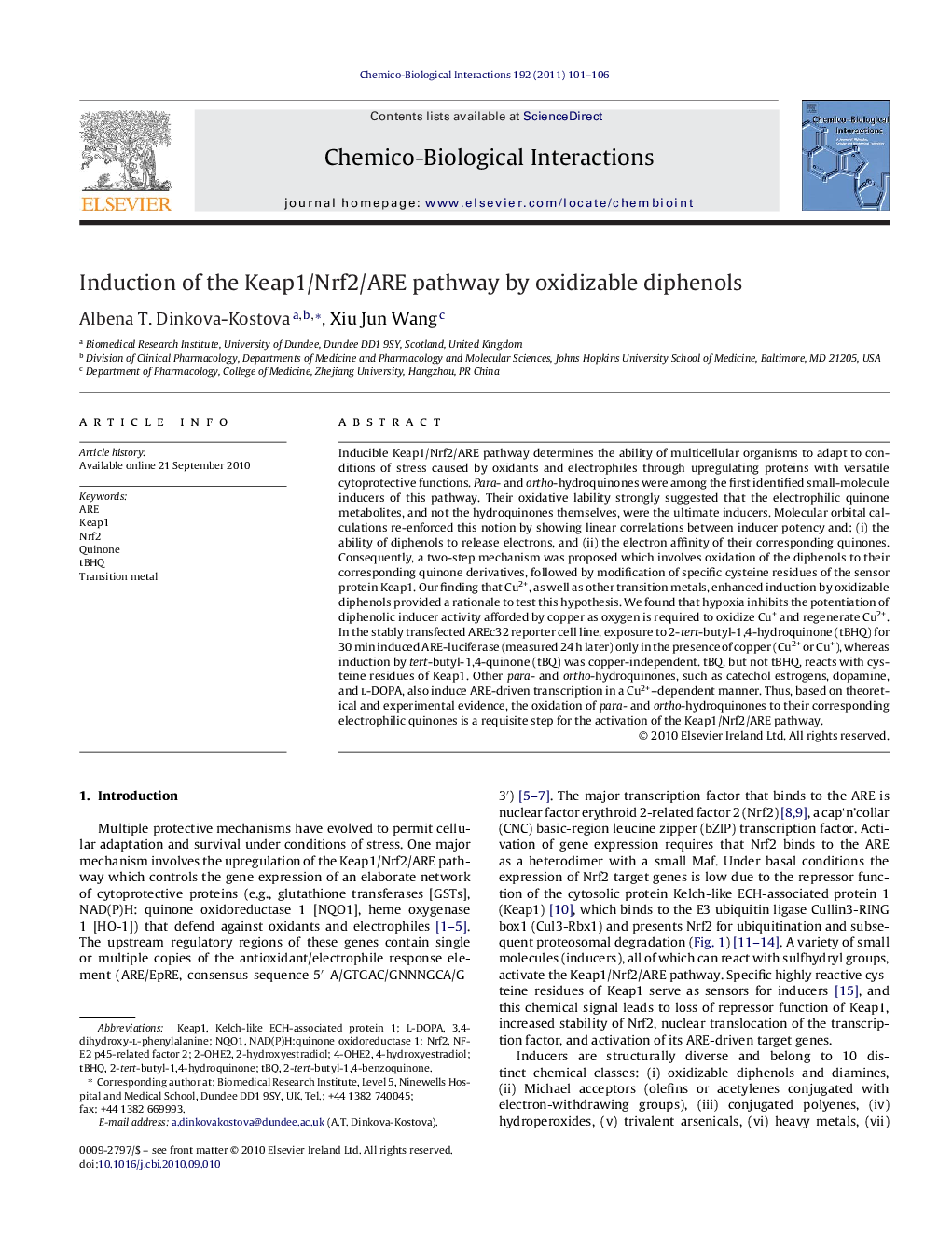| کد مقاله | کد نشریه | سال انتشار | مقاله انگلیسی | نسخه تمام متن |
|---|---|---|---|---|
| 2581022 | 1561642 | 2011 | 6 صفحه PDF | دانلود رایگان |

Inducible Keap1/Nrf2/ARE pathway determines the ability of multicellular organisms to adapt to conditions of stress caused by oxidants and electrophiles through upregulating proteins with versatile cytoprotective functions. Para- and ortho-hydroquinones were among the first identified small-molecule inducers of this pathway. Their oxidative lability strongly suggested that the electrophilic quinone metabolites, and not the hydroquinones themselves, were the ultimate inducers. Molecular orbital calculations re-enforced this notion by showing linear correlations between inducer potency and: (i) the ability of diphenols to release electrons, and (ii) the electron affinity of their corresponding quinones. Consequently, a two-step mechanism was proposed which involves oxidation of the diphenols to their corresponding quinone derivatives, followed by modification of specific cysteine residues of the sensor protein Keap1. Our finding that Cu2+, as well as other transition metals, enhanced induction by oxidizable diphenols provided a rationale to test this hypothesis. We found that hypoxia inhibits the potentiation of diphenolic inducer activity afforded by copper as oxygen is required to oxidize Cu+ and regenerate Cu2+. In the stably transfected AREc32 reporter cell line, exposure to 2-tert-butyl-1,4-hydroquinone (tBHQ) for 30 min induced ARE-luciferase (measured 24 h later) only in the presence of copper (Cu2+ or Cu+), whereas induction by tert-butyl-1,4-quinone (tBQ) was copper-independent. tBQ, but not tBHQ, reacts with cysteine residues of Keap1. Other para- and ortho-hydroquinones, such as catechol estrogens, dopamine, and l-DOPA, also induce ARE-driven transcription in a Cu2+–dependent manner. Thus, based on theoretical and experimental evidence, the oxidation of para- and ortho-hydroquinones to their corresponding electrophilic quinones is a requisite step for the activation of the Keap1/Nrf2/ARE pathway.
Journal: Chemico-Biological Interactions - Volume 192, Issues 1–2, 30 June 2011, Pages 101–106